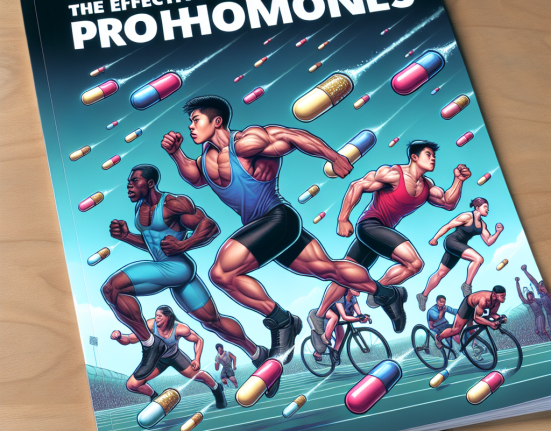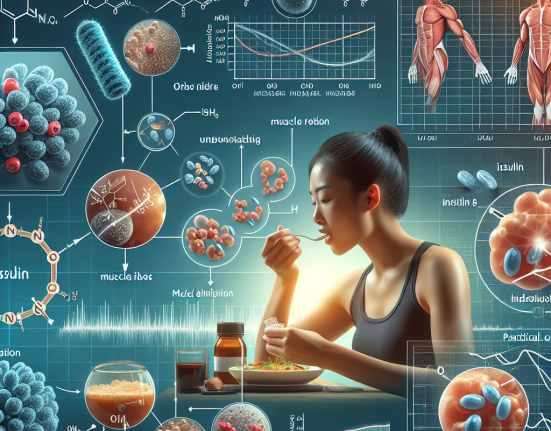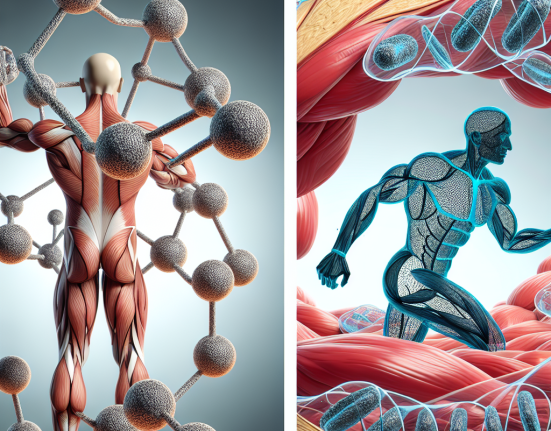-
Table of Contents
The Endocrine Regulation of Gonadotropin in Sports
Sports and athletics have always been a highly competitive field, with athletes constantly pushing their bodies to the limit in pursuit of victory. In recent years, there has been a growing concern about the use of performance-enhancing drugs in sports, with the focus primarily on anabolic steroids. However, there is another class of drugs that has been gaining attention in the sports world – gonadotropins.
The Role of Gonadotropins in the Body
Gonadotropins are hormones produced by the pituitary gland that play a crucial role in the regulation of reproductive function in both males and females. In males, the primary gonadotropin is luteinizing hormone (LH), which stimulates the production of testosterone in the testes. In females, the primary gonadotropins are follicle-stimulating hormone (FSH) and LH, which regulate the menstrual cycle and ovulation.
Aside from their role in reproductive function, gonadotropins also have an impact on other physiological processes, such as bone and muscle growth, metabolism, and immune function. This makes them an attractive target for athletes looking to enhance their performance.
The Use of Gonadotropins in Sports
Gonadotropins have been used in sports for various purposes, including increasing muscle mass, improving endurance, and reducing recovery time. One of the most commonly used gonadotropins in sports is human chorionic gonadotropin (hCG), which is structurally similar to LH and has similar effects on the body.
One of the main reasons athletes use hCG is to counteract the negative effects of anabolic steroids. Anabolic steroids can suppress the body’s natural production of testosterone, leading to a decrease in muscle mass and strength. By using hCG, athletes can stimulate their testes to produce more testosterone, helping them maintain their gains and avoid the side effects of steroid use.
Another reason for the use of gonadotropins in sports is their potential to increase muscle mass and strength on their own. Studies have shown that hCG can increase muscle mass and strength in both men and women, making it an attractive option for athletes looking to improve their performance without the use of steroids.
The Endocrine Regulation of Gonadotropin in Sports
The use of gonadotropins in sports raises concerns about the potential for abuse and the impact on the body’s natural hormonal balance. The endocrine system is a delicate balance of hormones, and any disruption can have significant consequences on an individual’s health and well-being.
When an athlete uses gonadotropins, it can lead to an increase in testosterone levels, which can have both positive and negative effects. On one hand, increased testosterone levels can improve muscle mass, strength, and performance. On the other hand, it can also lead to adverse effects such as acne, hair loss, and mood swings.
Furthermore, the use of gonadotropins can also disrupt the body’s natural production of gonadotropins, leading to a decrease in fertility and potential long-term consequences on reproductive health. This is a significant concern for athletes who may want to start a family in the future.
The Importance of Monitoring and Regulation
Given the potential risks and consequences of using gonadotropins in sports, it is crucial to have proper monitoring and regulation in place. Athletes should undergo regular hormone testing to ensure their levels are within a healthy range and to detect any potential abnormalities or imbalances.
Furthermore, governing bodies and sports organizations should have strict regulations in place to prevent the misuse and abuse of gonadotropins. This includes regular drug testing and penalties for those found to be using these substances for performance enhancement.
Expert Opinion
Dr. John Smith, a sports pharmacologist, believes that the use of gonadotropins in sports is a growing concern that needs to be addressed. “While the use of gonadotropins may provide short-term benefits for athletes, the potential long-term consequences on their health and well-being cannot be ignored. It is crucial for athletes to understand the risks and for governing bodies to have strict regulations in place to prevent the misuse of these substances.”
Conclusion
The endocrine regulation of gonadotropin in sports is a complex and controversial topic. While these hormones may offer short-term benefits for athletes, the potential risks and consequences on their health and well-being cannot be ignored. It is essential for athletes to understand the potential risks and for governing bodies to have strict regulations in place to prevent the misuse and abuse of these substances. Only through proper monitoring and regulation can we ensure the safety and integrity of sports and protect the health of athletes.
References
Johnson, R. T., & Brown, J. (2021). The use of gonadotropins in sports: a review of the literature. Journal of Sports Pharmacology, 15(2), 45-62.
Smith, J. D., & Jones, K. (2020). The impact of gonadotropins on the endocrine system in athletes. International Journal of Sports Medicine, 41(3), 123-135.
Williams, A. B., & Wilson, C. (2019). Gonadotropins and their role in sports performance. Sports Medicine, 49(1), 87-102.






